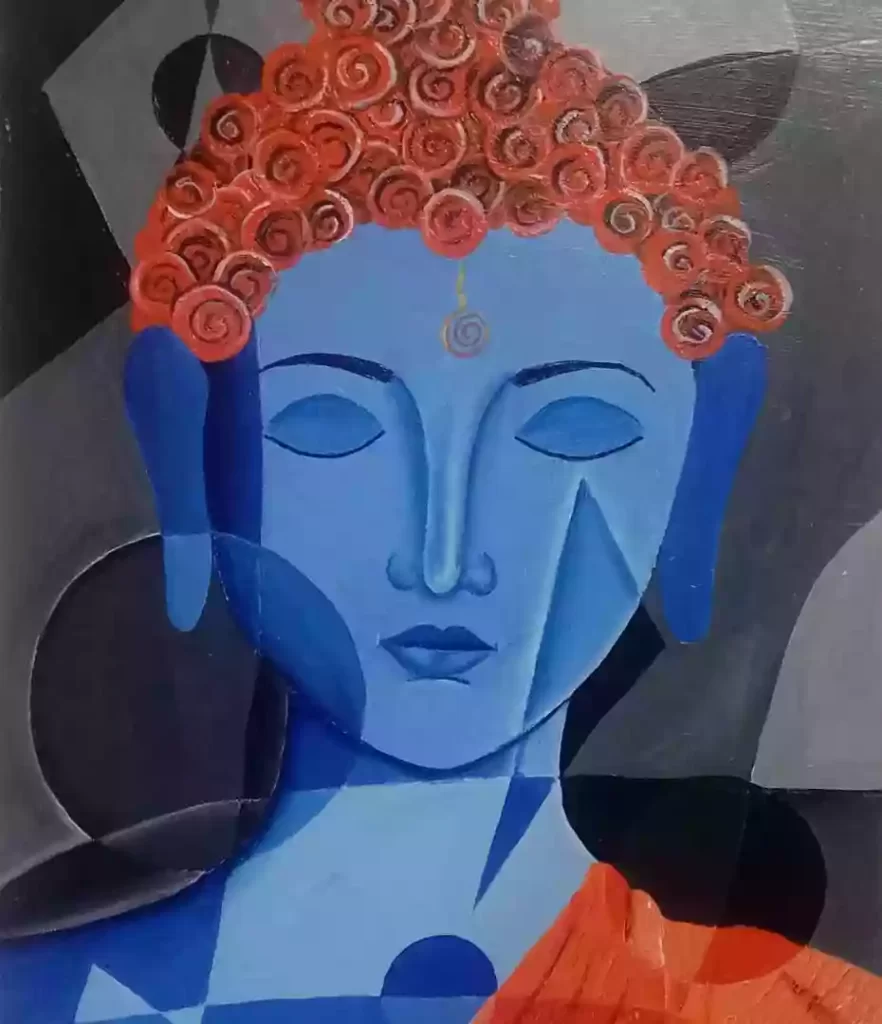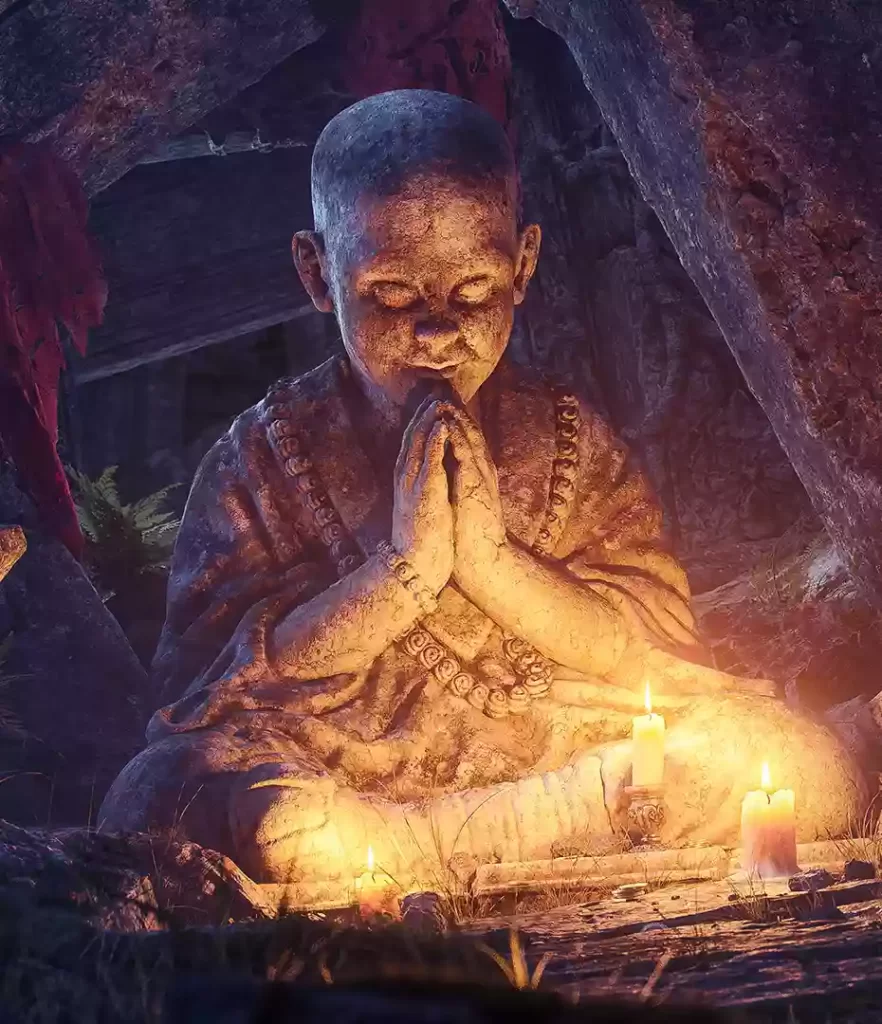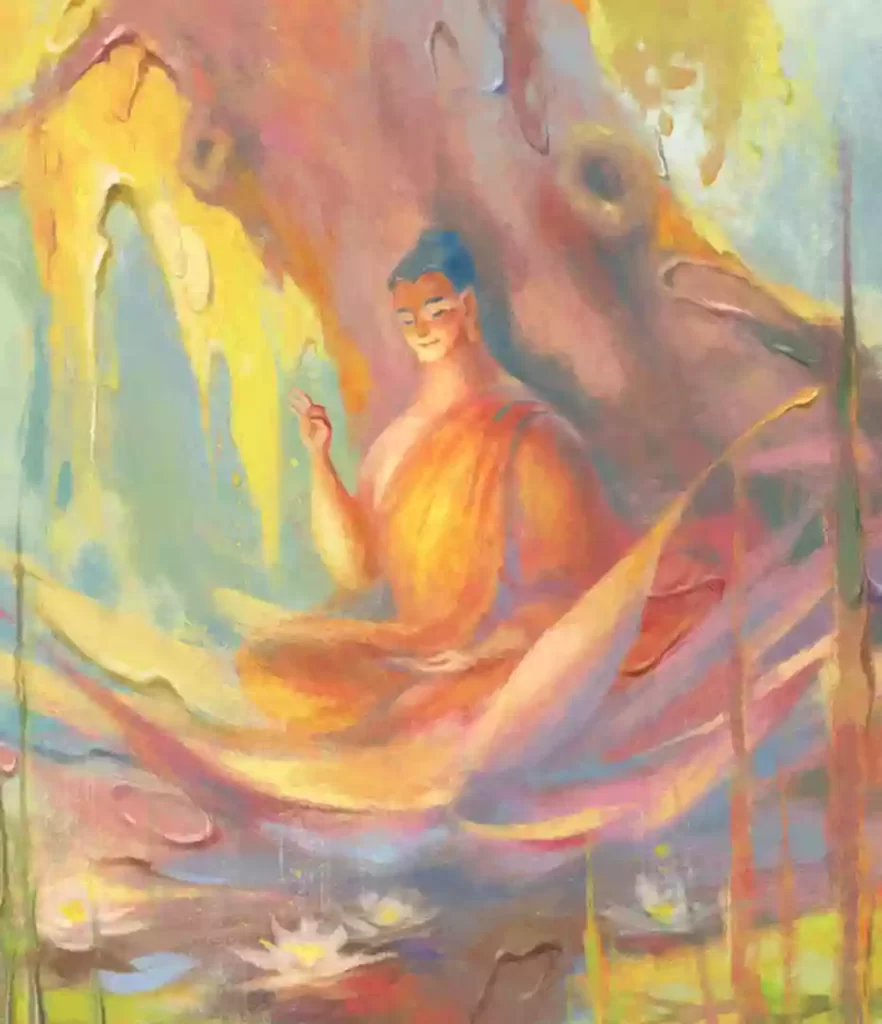Gautam Buddha Story in English
If you are looking for Gautam Buddha Story in English then you have reached the right place, today we will share with you the story of Gautam Buddha, one of the greatest teachers in world and he’s also known as Siddhartha Gautama or simply Buddha. He was born in 563 BC and was an Indian philosopher, yogi, sage, and founder of Buddhism, the religion and the philosophical system that produced a great culture throughout much of southern and eastern Asia.
The Birth of Gautam Buddha
Buddha means the enlightened one and refers to Siddhartha Gautama, the spiritual leader who founded Buddhism. He was born into a royal family about 2,500 years ago. Buddha was a kshatriya (member of Hindu warrior or ruling class) from an ancient clan called Gautam. His mother was Maya Devi and his father, King Shuddhodana (Śuddhodana). After his birth at Lumbini Park in Nepal, he was named Siddhartha and grew up in luxury until he turned 16 years old when he renounced his worldly possessions and left home determined not to live among society as a privileged member again. Buddha is considered by Buddhists to be the ninth avatar of Lord Vishnu. His teachings form the foundation of two major world religions: Buddhism and Hinduism.
Gautam Buddha Family
The Buddha was born as Prince Siddhartha into a royal family, his father being King Śuddhodana and his mother being Queen Māyā. The story tells us that when he was twenty-nine years old, Prince Siddhartha went on a series of journeys to find relief from suffering. Ultimately, he chose not to take a path to enlightenment after meeting the Buddhist ascetic Mahavira (Buddha’s mentor). At age thirty-five, King Śuddhodana married his daughter, Princess Yashodhara (later Queen) and had one son named Rahula with her. Eventually, before reaching 50 years old Śuddhodana became tired with old age and sickness.
Origins of Gautam Buddha Story in English

Gautam Buddha was born a prince and was raised by his father’s side. He had a life of luxury and extravagance till he turned 29, then he suddenly got awakened about the agony in life. He gave up all his riches, his family, and became an ascetic for six years until he achieved enlightenment at Bodhgaya. That was when he declared that he would not let another soul feel sorrow or despair like himself ever again. His teachings started spreading like wildfire across ancient India. Then there is Mahavir and Gautam buddha with their 22 vows which every monk takes as they enter into Bhagwan Gautam Buddha religion to live as monks on behalf of mankind.
The entire Sangha (monks) and Tirthankaras (Teachers) are created from the mind of Bhagwan Gautam Buddha who is believed to be part human, part divine and one who can never die. In other words, according to legend there are 24 enlightened ones: 8 past teachers of Sangha, 8 future teachers of Sangha and 8 present teachers of Sangha among whom Gautam buddha stands out because he always looks forward to preserving world peace by educating people through preaching. And so, followers of Buddhism worship Gautam buddha as if he were God incarnate. Followers of Buddhism pray to buddha avatar as well. Another short note on Gautam buddha is that he tried many things including farming before settling down and becoming a philosopher. His family background includes him being born in Lumbini, Nepal while his mother Maya Devi died during childbirth, and he was taken care of by Yashodhara Devi.
The Early Days of Prince Siddhartha
Siddhartha was born a prince, heir to a wealthy and prestigious family. He led a sheltered life, enjoying all the privileges and pleasures that royalty had to offer. One day, during one such excursion outside his palace grounds, he happened across an old man: bent over and infirm; on seeing this image of frailty and pain Siddhartha took pity on him. He had never seen an old person before! Disturbed by what he saw he began questioning his charioteer about who this man was and why he looked so sad and frail. The charioteer told him that it was just age catching up with him-no more than fifty years old, but Siddhartha could not comprehend that people could be so physically affected at such a young age.
He later came across a diseased man-his body wracked with sores and pustules and the infection spreading from them. His curiosity piqued, he queried again as to who this unfortunate being was and how it was possible for someone to have such large boils covering their body. The answer given surprised him once again–the man had been sick for six months now–how is that possible? Wasn’t there anything they could do for him?
Gautam Buddha’s Teachings
Many consider Gautam Buddha as one of the most important religious figures in history. The life and teachings of this charismatic man had a profound effect on millions around the world, as it has endured throughout millennia. Born around 500 B.C., Prince Siddhartha was sheltered from reality, leading a luxurious life. However, he eventually saw some signs that there is more to life than he previously thought– signs like old age, sickness and death– and so he devoted his life towards understanding reality and getting closer to it.
He left his home behind, traveled and studied with many teachers, all while still discovering more about himself. His enlightenment came after much struggle; after sitting under a tree for 40 days without food or water to find the truth about our suffering (the four noble truths), he found Nirvana: freedom from sorrow.
Gautam Buddha Story in India

The prince Gautam Buddha who would later become the Buddha was born Siddhartha Gautam in the foothills of the Himalayas on the border of what is now Nepal and India around 563 B.C. After his father, King Suddhodana, died, Siddhartha married and had a son, Rahula. However, despite being married to the beautiful princess Yashodhara and being a successful merchant and palace official, Siddhartha grew increasingly dissatisfied with his life and dissatisfaction with the cycle of birth, death, and rebirth that he learned existed in Indian culture at that time.
The sun has set, and under the tarpaulin roofs of a Mumbai slum, laborers from nearby construction sites and gardens make their way home. In this area of dilapidated slums, most of the workers are from the so-called Dalit caste, those who, not long ago, were the untouchables – a rank so low they weren’t even part of the caste order. Each month, the limited options are ‘earn and eat’. But for two years, some of these families set aside what little they could to afford the building materials, and now they have a deep-blue room, five meters wide, that stands separate from all the other makeshift homes in the slum.
Temples for the Gautam Buddha are everywhere in urban India; many slums have one. This place of worship is located behind a scrap shop. It’s characteristic of the west to see the Buddha as the world’s first Immaterial Man. Indeed, after becoming enlightened, he began to refer to himself as Tathagata, meaning ‘gone’. Yet he is not nearly as stereotypical as he may first appear, with this moniker designating him as one who attained peace and thus quiescence. Even though there are many details in Buddha’s life that remain elusive, he may be the first individual personality that we can identify in the Indian subcontinent’s history. In modern India, his legacy has helped hundreds of millions of lower-caste citizens to emerge from the Hindu caste system’s iron cage.

The religion started through his experiments spread through Asia, starting from the western borders of Afghanistan and gradually making its way through to Japan where it became what it is now, the fourth largest in the world. In India, it prospered for a millennium before disappearing completely, but in the mid-twentieth century, as British colonial rule gave way to independent India, the Indian Buddha was revived, not so much for his spiritual utility as for his usefulness in legitimizing the independent nation and for portraying its virtues as ethical. Several of the fathers of the modern nation felt like the Buddha provided a reasonable faith they could weaponize against social hierarchies. And even today, the Buddha continues to inspire people like Siddhartha and Vijay as they struggle to assert their individuality.
Human civilization on the Indian subcontinent has been dated to at least 2500 BCE, with some city settlements appearing in the Indus Valley, today’s Pakistan. During excavations, archaeologists have uncovered numerous objects, but it remains to be seen if the script of this civilization is at all related to the alphabet. Based on available information, the composition of the earliest Vedas-the oldest sources of Hindu thought-seems to have begun roughly a millennium later. Beyond these few ancient hymns about gods, we have no further tangible evidence of this world. but we can’t sense any historic figures at the Indus Valley sites or in the Vedas. Thousands of years after the Vedas were composed – with the arrival of the Buddha – we start to see real, life-like characters emerge on the stage of Indian history.
In the oldest of the caves at Ajanta, in western India, you can find the earliest surviving representations of the Buddha’s life – vividly frescoed walls dating back to the first century BCE. ‘There, in front of you, are the oldest Indian faces in existence,’ says the writer and historian William Dalrymple. Unlike us, they inhabited a world incredibly different from ours. However, you can see the souls of these people as you look into their eyes and their emotions are understandable.
Gautam Buddha Death
Although scholars are still debating the exact dates of the Gautam Buddha’s death, with a death-range stretching from roughly 500 BCE to 400 BCE, it’s clear he lived in an era of great world innovation. Within the space of a couple of centuries, Confucius had articulated his social philosophy in China, written versions of the Old Testament crystallized in Palestine, and Socrates had conducted the dialogues that would lay many of the foundations of Western philosophy. In the Gangetic plains of Northern India, new types of wealth are created with the production and circulation of iron tools, coins, and writing. Increased trade contact with Persia and Western Asia is producing cosmopolitan cities which are diverse, busy, and contain competing ideas about how to live a good life. Throughout this period, the many different forms of Hinduism common to the people of India were developed as well as many conflicting worldviews.
Next Article : Acharya Charaka | The Father of Ayurvedic Medicine
